Art reviews: Forever Changes | Code Red | The Word For World is Forest | Under the Skin | Harbinger
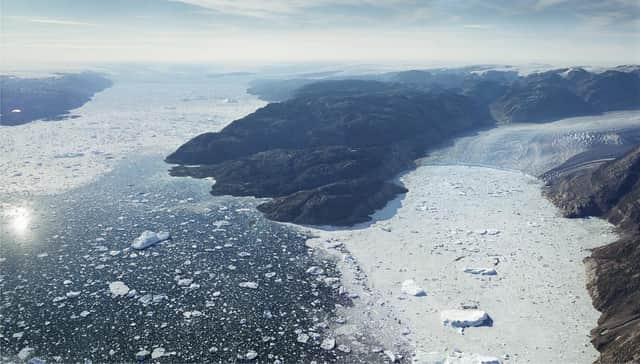

Not so very long ago, art with a message was regarded as suspect, as if the quality or integrity of the work was diminished by the fact of it having something to say. In recent years, this view has shifted, with increasing numbers of artists addressing topics such as race and gender and (perhaps biggest of all) climate change.
Visitors to Glasgow for COP26 can expect to see plenty of art: large works, from Robert Montgomery’s Grace of the Sun, at pop-up venue The Landing Hub, an 11-metre tall installation made from solar lamps which lights up at sunset, to James Pfaff’s neon text Returning And Into Your Arms, lighting up the choir screen in Glasgow Cathedral.
Advertisement
Hide AdThere are works online, including Millipede (www.millipede.shop) devised by Scottish theatre makers Shona Reppe and Andy Manley for the National Theatre of Scotland and Think Arts (Kolkata), using the portal of a shoe shop to explore the idea of a carbon footprint, and others you can experience as you move about the city, such as Ilana Halperin’s thoughtful audio work on volcanoes, Excerpts from the Library, produced for Glasgow International, which is back for COP26 (https://www.patricia-fleming.com/ilana-halperin-viewing-room).
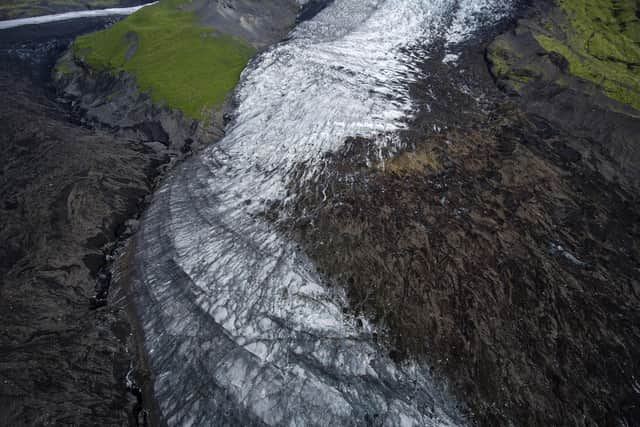

Various of the city’s galleries have chosen to stage exhibitions on climate-related topics too. At Street Level Photoworks, COP26 has provided the opportunity for a major group show by photographers from Nordic countries. Forever Changes (****) is a striking and substantial show featuring some top-flight photographers, and a chance to experience a spectrum of artistic approaches to the subject.
Denmark-born Klaus Thymann, a founder of the organisation Project Pressure, has a definite agenda with his impactful images of glaciers around the world (and they’re not always in the places you think). Norwegian Christian Houge, focusses on the Rhone glacier in Switzerland, parts of which are wrapped in tarpaulins in the summer in an attempt to protect it from the sun’s rays. His pictures of the glacier under wraps evoke both tenderness and a sense of futility; the coverings look like dirty white shrouds. Finlander Lasse Lecklin has taken aerial photographs of the Vatnajokull glacier in Iceland, which has lost 15 per cent of its mass since 2000, but his semi-abstract images convey beauty and grandeur as well as catastrophe.
Helen Schmitz (from Sweden) depicts landscapes changed by humankind, while Iceland’s Hallgerour Hallgrimsdottir collects postcards of volcanoes erupting, which are eagerly snapped up by tourists regardless of the destruction wreaked. Both Bjarni Mohr (who is Faroese) and Scottish film-maker Mike Day look at the Faroe Islands, and at the implications of pollution and climate change on traditional lifestyles and remote communities.
Meanwhile, veteran artist Peter Kennard (also commissioned by Street Level) occupies the foyer of Trongate 103 with Code Red (***). Kennard, who is Professor of Political Art at the Royal College of Art, has always been unashamed of agendas, and the title of this body of work comes from the report by the Intergovernmental Panel on Climate Change (IPCC) this summer which announced a “code red for humanity.”
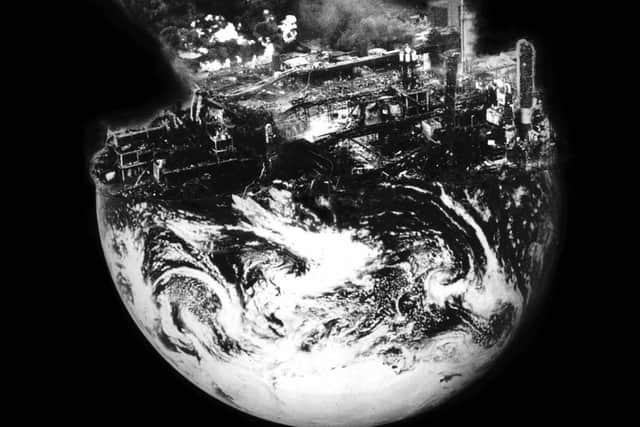

Using his classic medium of photomontage, he is (he says) “turning anger into image.” Many of the works feature the famous 1972 photograph of the earth from space. It is spliced with burning oil refineries, turned into a gas mask, or made into a clock the hands of which humanity tries in vain to hold back. The work is clever and powerful, aiming to shock people out of complacency and into action, but there is a danger it could have the opposite effect: we might feel shouted at and choose to withdraw in despair.
Advertisement
Hide AdA different approach is showcased by German photographer Sophie Reuter in The Word for World is Forest (****) at CCA. Reuter lived with and documented the work of the protesters in the ancient Hambach Forest near Cologne attempting to stop its destruction to build Europe’s largest coal mine. Although eventually evicted by police in 2018, the protest was partially successful in securing the preservation of some of the forest.
It’s a dispatch from the battle lines of climate change, but the protesters’ rigorous insistence on anonymity meant Reuter had be inventive. She documents the various types of direct action, from airborne pods and tree houses to holes in the ground in which protesters lived to block roads to the mine. She also shows the mine itself, so vast that gargantuan machines start to look like Matchbox toys. Her image of a protestor, guitar on their back, standing on its edge recalls Caspar David Friedrich’s Wanderer above the Sea of Fog, a moment of troubling 21st-century sublime.
Advertisement
Hide AdThe group show, which takes its title from a 1972 short story by Ursula K Le Guin, also includes film and photography by indigenous peoples: Our People, Our Climate, which shows work made by young people in Inuit communities in Canada and If Not Us Then Who, which works with groups across the world, including Indonesia and Brazil.
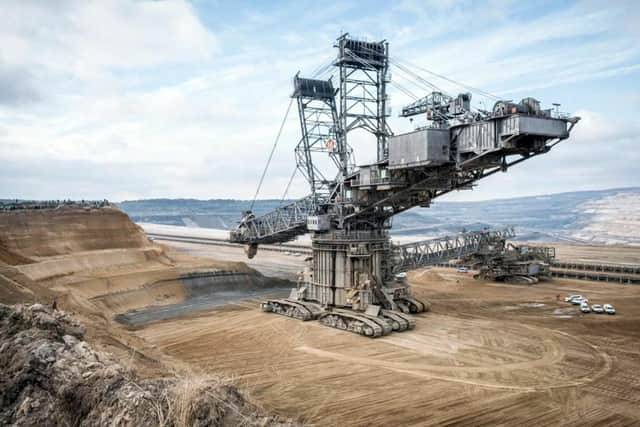

Endangered species are the focus of Under the Skin (***) at Glasgow Print Studio, the work of brothers Ed and James Harrison, an illustrator and a printmaker. Working at GPS, they found a way to make screenprints using a layer of phosphorescent ink which becomes visible in the light of an ultra-violet torch. Before our eyes, species on the verge extinction – the Bornean orang-utan, the pygmy elephant, the critically endangered Vaquita porpoise – turn to fossils, from living things to museum pieces, a harbinger of things which may come.
Meanwhile, at Transmission, there is a show called Harbinger (***), though the exhibition is only one aspect of a multi-layered project which includes a ’zine and interviews and research which can be explored via QR codes. Taking as its theme the impact of climate change on marginalised groups, it takes aim at some very big issues, from the rights of women and people of colour to slavery, colonialism and the unequal impacts of covid-19.
While no exhibition of any size could possibly do justice to all of these, there is some strong work here, including Roisin Doherty’s beautiful ink drawings of wildlife in her native Ireland, Sekai Machache’s paintings made by mixing acrylic paint with hair relaxer products and Hana Tischler’s charcoal portraits of women of colour.
Forever Changes, Street Level Photoworks, until 30 January; Peter Kennard: Code Red until 19 December (also at Edinburgh’s Out of the Blue Drill Hall, 6-26 November); The Word for World is Forest, CCA, until 11 December; Under the Skin at Glasgow Print Studio until 27 November; Harbinger at Transmission until 7 November.
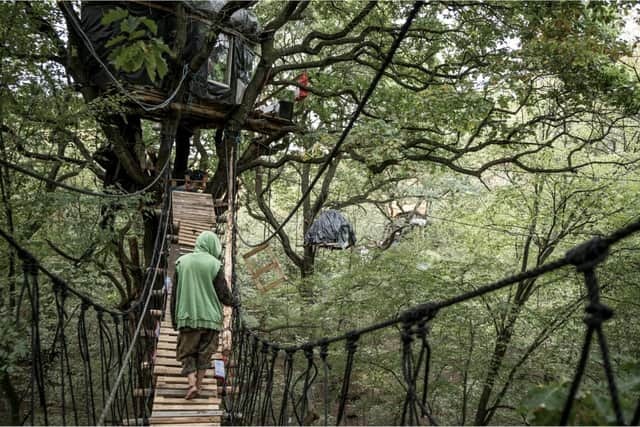

A message from the Editor:
Thank you for reading this article. We're more reliant on your support than ever as the shift in consumer habits brought about by coronavirus impacts our advertisers.
If you haven't already, please consider supporting our trusted, fact-checked journalism by taking out a digital subscription at https://www.scotsman.com/subscriptions